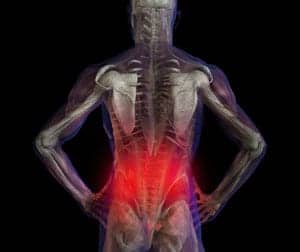The National Institute of Health (NIH) announces recommended standards for clinical low back pain research from the Health Task Force on Research Standards for Chronic Low-Back Pain.
An NIH news release reports that the Institute of Medicine has estimated that chronic pain impacts approximately 100 million adults in the US, with an estimated annual cost of up to $635 billion. Additionally, in the US, low back pain is designated as the most common cause of job-related disability and a leading contributor to missed work. Back pain is also reported to be the second most common neurological ailment in the US.
The release adds that the recommendations were published in several leading back pain journals.
A variety of challenges in this arena have faced the research community, the release notes, including finding prevention and treatment strategies to reduce the burden of low back pain, and the difficulties in comparing the results of previous studies due to issues such as inconsistent terminology and outcome measures. To address these challenges, in 2012 the NIH Pain Consortium commissioned a task force of experts to recommend solutions. The task force, led by by co-chairs Richard A. Deyo, MD, MPH, of the Oregon Health and Science University and Kaiser Center for Health Research, Portland, and Samuel F. Dworkin, DDS, PhD, of the University of Washington, Seattle, developed field-specific standards through a three-stage process of gathering research, meetings to investigate questions in the field, and deliberation.
The task force’s recommendations center on a standard set of data-collection questions, or a uniform minimal data set, intended to increase consistency among studies. The release notes that data-collection questions include assessing length of time a patient has been experiencing low back pain, asking about functional limitations use of various treatment approaches, and impact on a variety of factors such as mood and sleep.
The development of a uniform minimal data set is a “major step to driving strong science around low back pain,” says Josephine P. Briggs, MD, director of the National Center for Complementary and Alternative Medicine and NIH Pain Consortium Executive Committee member. Briggs adds that there is hope that the research standards will help ensure that the science can be translated into better clinical care.
Stephen I. Katz, MD, PhD, director of the National Institute of Arthritis and Musculoskeletal and Skin Diseases, emphasizes in the release that the organization encourages all researchers who study low back pain to use these standards in their research efforts. “With the adoption of a more uniform research approach, we hope to see greater and faster progress for preventing and treating this condition,” Katz adds.
According to the release, the NIH Pain Consortium convened the Task Force on Research Standards for Chronic Low Back Pain with 16 invited experts from varied disciplines and from scientific and research institutions outside NIH. The task force was then charged with addressing the challenge of comparing data across different studies.
[Source: NIH]





